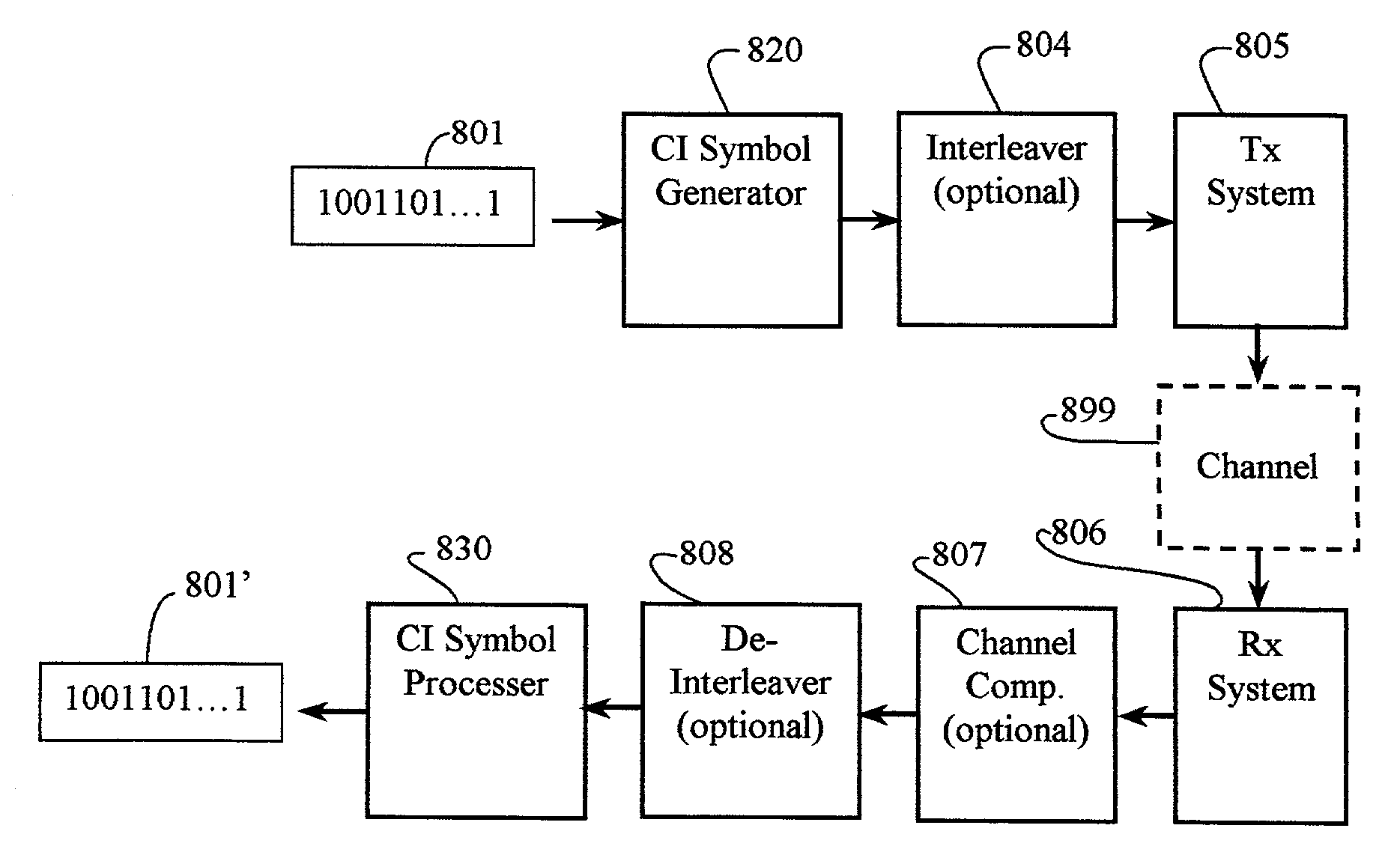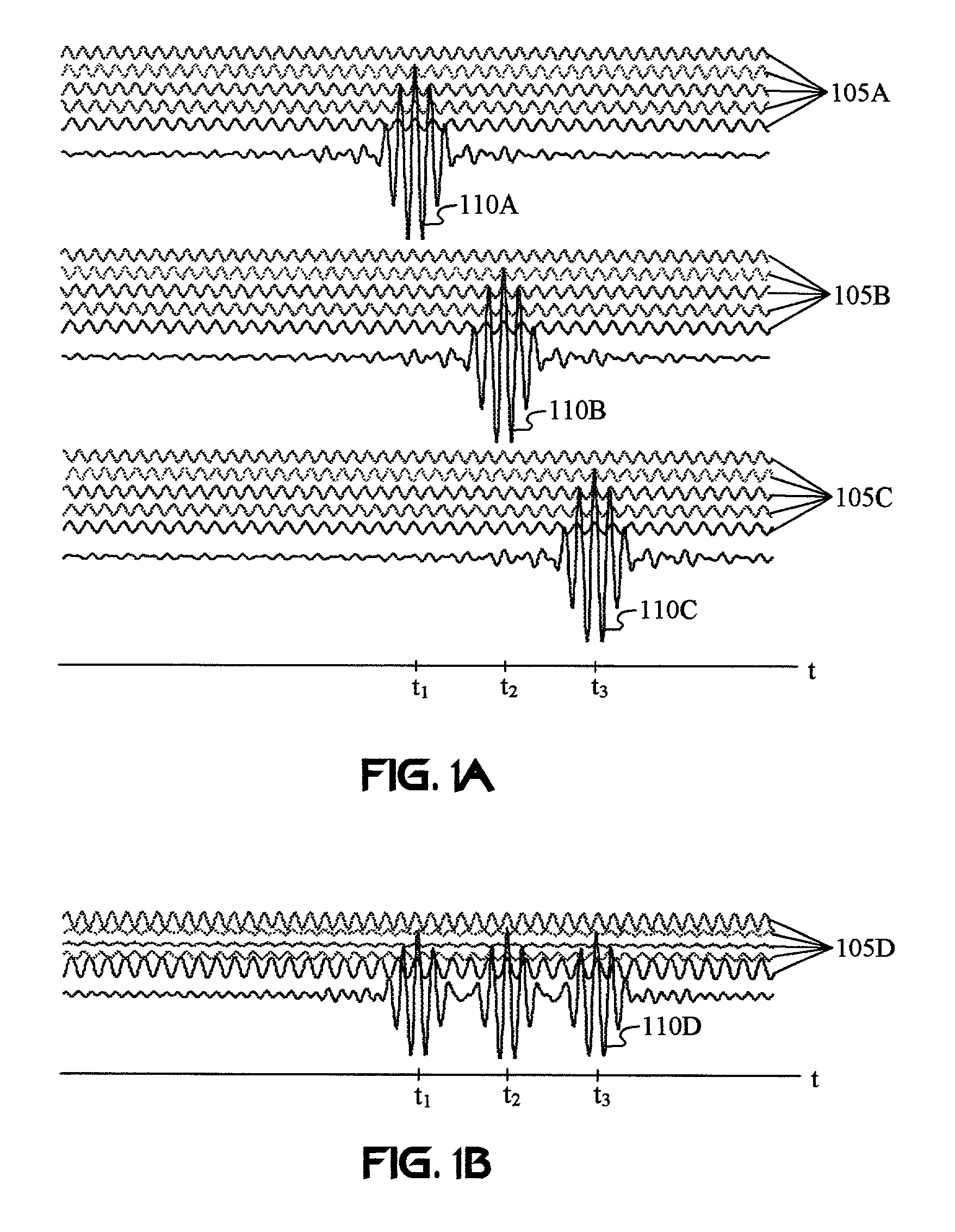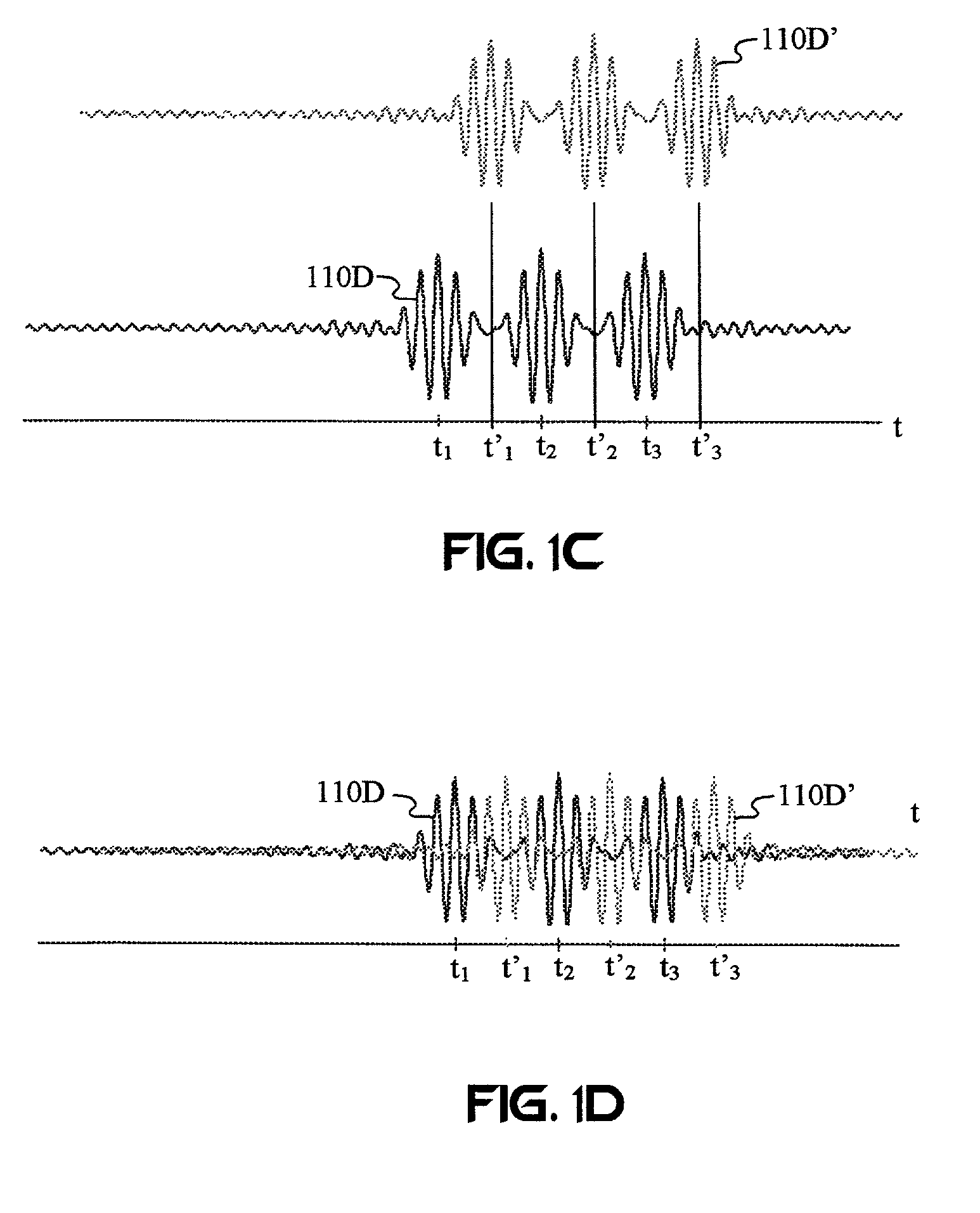Carrier interferometry networks
a carrier interferometer and network technology, applied in the field of carrier interferometer networks, can solve the problems of substantial cost and power saving, and achieve the effects of increasing throughput, improving bit-error rates, and increasing throughpu
- Summary
- Abstract
- Description
- Claims
- Application Information
AI Technical Summary
Benefits of technology
Problems solved by technology
Method used
Image
Examples
Embodiment Construction
[0065]The description of the preferred embodiments assumes that the reader has a familiarity with CI described in the following publications, which are incorporated by reference:
[0066]1. B. Natarajan, C. R. Nassar, S. Shattil, M. Michelini, “Application of interferometry to MC-CDMA”, accepted for publication in IEEE Transactions on Vehicular Technology.
[0067]2. C. R Nassar, B. Natarajan, and S. Shattil, “Introduction of carrier interference to spread spectrum multiple access,” IEEE Emerging Technologies Symposium, Dallas, Tex., 12-13 Apr. 1999.
[0068]3. B. Natarajan and C. R. Nassar, “Introducing novel FDD and FDM in MC-CDMA to enhance performance,” IEEE Radio and Wireless Conference, Denver, Colo., Sep. 10-13, 2000, pp. 29-32.
[0069]4. Z. Wu, C. R. Nassar, A. Alagar, and S. Shattil, “Wireless communication system architecture and physical layer design for airport surface management,” 2000 IEEE Vehicular Technology Conference, Boston, Mass., Sep. 24-28, 2000, pp. 1950-1955.
[0070]5. S....
PUM
 Login to View More
Login to View More Abstract
Description
Claims
Application Information
 Login to View More
Login to View More - R&D
- Intellectual Property
- Life Sciences
- Materials
- Tech Scout
- Unparalleled Data Quality
- Higher Quality Content
- 60% Fewer Hallucinations
Browse by: Latest US Patents, China's latest patents, Technical Efficacy Thesaurus, Application Domain, Technology Topic, Popular Technical Reports.
© 2025 PatSnap. All rights reserved.Legal|Privacy policy|Modern Slavery Act Transparency Statement|Sitemap|About US| Contact US: help@patsnap.com



